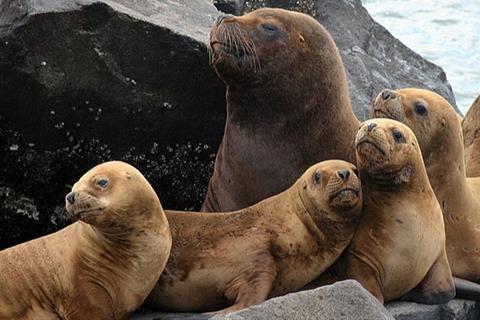This most recent influx of dead sea lions marks another swath of marine mammals dying from the viral infection across South America, Newsweek reported.The Patagonian environmental authority said in a statement that 50 sea lions have been found dead so far with symptoms matching bird flu.
Earlier this month, around other 20 sea lions died off the coast of Tierra del Fuego, at the southernmost tip of Argentina, seven of which tested positive for highly pathogenic H5N1 avian influenza virus. Positive cases of H5N1 bird flu have been detected across the country’s coast, including in Buenos Aires, Rio Negro and Mar del Plata, according to the Argentinian National Agri-Food Health and Quality Service (Senasa).
Worldwide outbreak
H5N1 bird flu is a highly infectious strain of influenza virus that usually infects birds. The H5N1 strain initially emerged in 1996 from geese in China. The virus can also jump to mammals - including humans - and cases of the infection in both birds and mammals have soared since 2021 when a worldwide outbreak began.
In March alone, 3,487 sea lions were reported dead in Peru by the country’s national parks service, many of which were as a result of the H5N1 virus. It is thought that more than 20,000 mammals from over 15 species have died as a result of the virus across Peru and Chile since the outbreak began.
“This outbreak in sea lions began in Peru, then it passed to Chile and now it’s reaching Argentina,” Pablo Plaza, a biologist and researcher at CONICET, the main organization dedicated to promoting scientific research in Argentina, told Spanish newspaper El Pais.
“There are two hypotheses here: Either they were infected because they were in contact with infected birds—which is the most likely [scenario]—or the virus, in some way, underwent a mutation and is now being transmitted from sea lion to sea lion.”
Mammals infected
Other mammal species that have been reported to have been infected by the virus include grizzly bears, as well as a recent outbreak in cats in Poland. Nearly 59 million poultry birds across 47 U.S. states have been affected by the outbreak, according to Centers for Disease Control (CDC) data, with around 7,000 wild birds testing positive for the virus.
The infection has been spreading in marine mammals along the South American coast in recent months, sparking fears that it may eventually reach Antarctica, especially with the seasonal migration of infected birds.
Only one person has tested positive for the H5N1 bird flu in the United States, with that individual having been directly involved with culling poultry infected with the virus. World Health Organization data shows that eight people have been infected since 2021 worldwide.
Fears of mutation
The virus has circulated for several decades, infecting over 700 people since 2003. Around half of the people infected died from the virus.
The risk of the virus being spread between humans appears to be very low, though there are fears that it may mutate to be more effective at transmission between mammals.
“With the information available so far, the virus does not appear to be able to transmit from one person to another easily, but vigilance is needed to identify any evolution in the virus that can change that,” Sylvie Briand, the director of Epidemic and Pandemic Preparedness and Prevention at WHO, said in a statement in July.
“WHO is working closely with [the Food and Agriculture Organization of the United Nations] and [World Organization for Animal Health], and laboratory networks to monitor the evolution of these viruses, looking for signals of any change that could be more dangerous to humans. We encourage all countries to increase their ability to monitor these viruses and to detect any human cases. This is especially important as the virus is now affecting countries with limited prior experience in avian flu surveillance.”








No comments yet